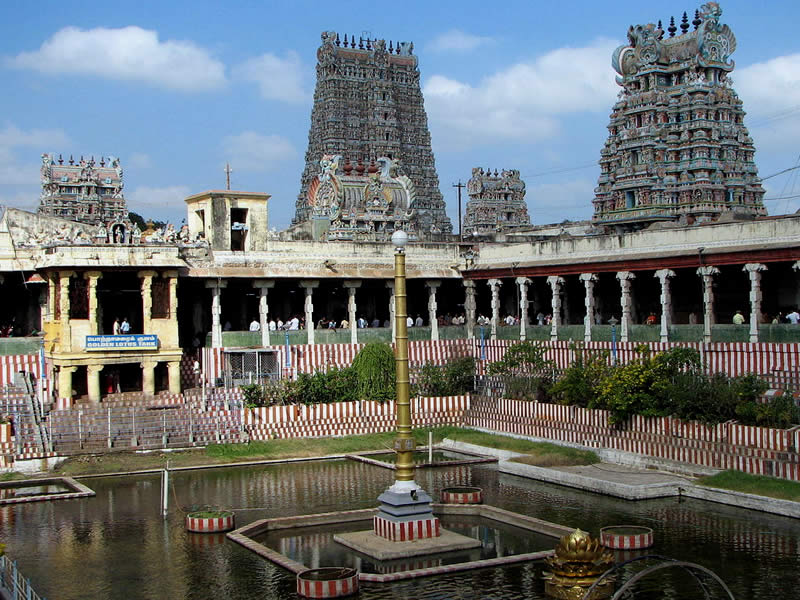Sorry! No information is available
Madurai was once called forest KADAMBAVANAM. Once a merchant named Dhananjaya who was passing through the forest, saw INDRA - the king of Gods, worshipping a SWAYAMBHULINGAM under a kadamba tree in the forest. This was reported immediately to the king Kulashekara Pandyan. Kulashekara cleared the forest and built a magnificent Sri Meenakshi Sundareswarar temple around the sacred LINGAM and he built a lotus shaped city around the temple. On the naming ceremony of the city, Lord Shiva appeared magnificently to bless the city. The divine nectar (madhu) from the matted locks of Shiva fell on the blessed city. So, then the city was named "Madhurapuri".
As early as the 3rd century BC, Megasthanes visited Madurai. Later many people from Rome and Greece visited Madurai and established trade with the Pandya kings. Madurai flourished till 10th century AD when it was captured by Cholas the arch rivals of the Pandyas.
The Cholas ruled Madurai from 920 AD till the beginning of the 13th century.
In 1223 AD Pandyas regained their kingdom and once again become prosperous. Pandian Kings patronised Tamil language in a great way. During their period, many master-pieces were created. "Silapathikaram", the great epic in Tamil was written based on the story of Kannagi who burnt Madurai as a result of the injustice caused to her husband Kovalan.
In April 1311, Malik Kafur, the general of Alauddin Khilji who was then the ruler of Delhi, reached Madurai and raided and robbed the city for precious stones, jewels, and other rare treasures. This led to the subsequent raids by other Muslim Sultans.
In 1323, the Pandya kingdom including Madurai became a province of the Delhi empire, under the Tughlaks.
The 1371, the Vijayanagar dynasty of Hampi captured Madurai and it became part of the Vijayanagar empire. Kings of this dynasty were in habit of leaving the captured land to governors called Nayaks. This was done for the efficient management of their empire. The Nayaks paid fixed amount annually to the Vijayanagar empire. After the death of Krishna Deva Raya (King of Vijayanagar empire) in 1530 AD, the Nayaks became independent and ruled the territories under their control.
Among Nayaks, Thirumalai Nayak (1623-1659) was very popular, even now he is popular among people, since, it was he who contributed to the creation of many magnificent structures in and around Madurai. The Raja Gopuram of the Meenakshi Amman Temple, The Pudu Mandapam and The Thirumalai Nayakar's Palace are living monuments to his artistic fervor.
Madurai started slipping into the hands of the British's East India Company. In 1781, British appointed their representatives to look after Madurai. George Procter was the first collector of Madurai.
Madurai Main, Madurai, Tamil Nadu 625001
Madurai
0452 234 4360
,,







